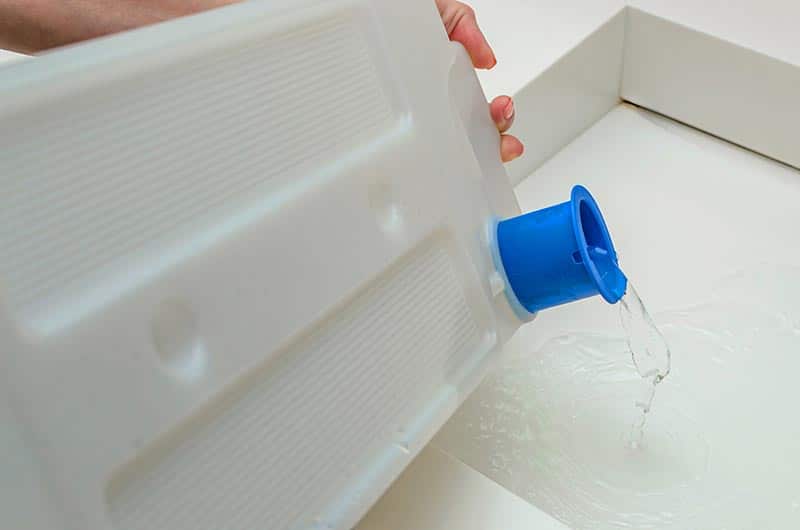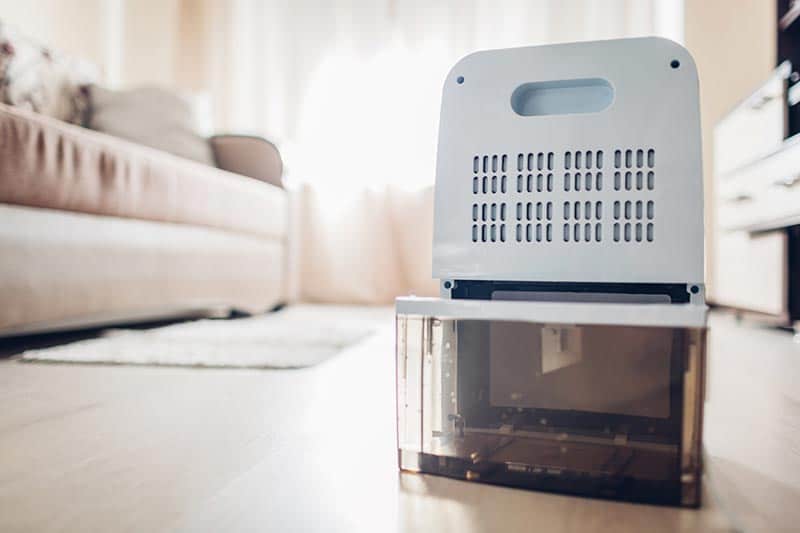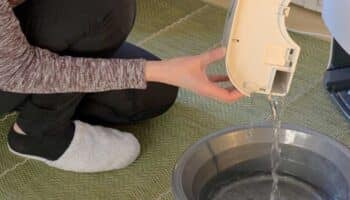Does your dehumidifier keep overflowing? Your water reservoir might be damaged. Here’s why this is happening.
I don’t know about you, but there are very few things I find more frustrating than having an appliance fail to do the one thing it’s supposed to.
I’m talking, of course, about an overflowing dehumidifier.
How can an appliance that has been specifically designed to keep your home dry, be the main source of puddling all over your living space?
There are several reasons why you might be encountering this problem. From obstructed pumps or a broken compressor, to a damaged reservoir. You name it, it’s definitely a possibility.
In order to address this issue properly, you need to know exactly what you’re looking for, what the cause of the malfunction is, and, of course, what you can do to fix it and prevent it from happening in the future.
This is where I come in.
Below, you will find a list with the most common causes to this occurrence, and the simplest steps you can take to address each one of them. Rest assured that, if you follow them religiously, your overflowing nightmare will be a thing of the past.
Ready? Let’s dive in!
Fixing an Overflowing Dehumidifier
You’d be surprised at how many people spend copious amounts of money every year trying to find what’s wrong with their dehumidifier, only to find too late that the source of the problem was much simpler to fix, than they had originally thought.
I want to keep you from becoming a part of this statistic.
Thinking of every possibility and leaving no stone unturned is essential to the troubleshooting process; however, prying your unit open, and searching for technical faults recklessly is the best way to waste your precious time, and money.
Not to mention that you’ll be risking doing further damage to your machine.
Don’t get me wrong, for most of these fixes we will have to access your dehumidifier’s internal components, but even when performing such delicate processes, we must be careful, and observant.
Without further ado, here’s why your dehumidifier keeps overflowing:
- The reservoir is full
- Your pumps are obstructed
- Your compressor is broken
- The reservoir is damaged
- Your coils are frozen
#1 The Reservoir Is Full

This might seem extremely obvious, and like something that would never happen to you, but remember that it’s the most seemingly unimportant things, that we tend to overlook more often.
Dehumidifiers are designed to make our lives easier and be mostly independent of us, so an overfilled reservoir can be easy to miss. Especially if you have a hectic lifestyle.
If your dehumidifier has no pumps, and keeps overflowing, you might want to check your reservoir, and make sure you’re not exceeding the recommended water levels.
Solution: You might think it’s ridiculous, but using a post-it note as a reminder to empty the tank regularly, can change your life.
Alternatively, if you don’t have the time to continuously remove water from the reservoir, thinking about getting a model with a pump, is not a bad idea. This will save you a lot of time, and prevent overflowing in the future.
#2 Your Pumps Are Obstructed
As you use your dehumidifier, sediment will build up in the tubes, and pumps. And while the rate at which this happens will depend greatly on the water in your area, it will certainly happen eventually.
Now, before you throw away your appliance, let me assure you that sediment is not dangerous per se. This mineral is present in the water we shower, and do our dishes in, as well as in the water we drink (if you drink tap water, of course).
This substance won’t cause problems immediately, but if you wait too long before cleaning your dehumidifier, the buildup can become a troublesome obstruction.
As you know, when they work normally, the pumps and compressor in your appliance are responsible for preventing overflowing in your reservoir by frequently draining the collected water.
However, when this process is hindered by sediment, your unit’s ability to remove excess water is compromised.
Solution: Descale your internal components at least once every two months.
This can be done very easily by using a mixture made up of equal parts water and white vinegar. Once you have prepared this cleaning solution, pour it into your reservoir, and let the unit run normally until the water in it has been nearly depleted.
Making sure to keep your dehumidifier free of obstructions will not only solve your problem, but also prevent overheating, and extend its lifespan significantly.
#3 Your Compressor Is Broken
As stated above, your compressor is one of the most important parts inside your appliance.
Without this component, the dehumidifying process cannot happen, as neither water circulation, nor moisture removal can be effectively achieved.
If your dehumidifier keeps overflowing, there is a very good chance that you have to replace your compressor immediately. Failing to address this malfunction as soon as possible can result in other, more concerning problems, such as overheating.
Solution: Accessing your compressor shouldn’t prove too difficult. You’ll have to remove the frontal plastic panel and filter, and undo a couple of screws to expose it, but from there, everything else should be smooth sailing.
If you’re a visual person like me, there are tons of online videos you can check out and follow along step by step.
More often than not, replacing a faulty compressor will make the pumps work normally again, and resolve your overflowing issue.
If you want to get any replacement part – or see how much one would cost – click to enter your model number in the search bar below. Our partners at AppliancePartsPros stock almost every part with free guides on how to install them.

#4 The Reservoir Is Damaged

Assuming that none of the solutions above have worked out for you, we can safely start considering the possibility of damage to your reservoir.
In theory, you should not move your dehumidifier too much. However, either due to noise or changing needs, it’s not always possible to keep it static in a single room. If this is your case, and you accidentally dropped it or banged it against an object during one of these relocations, there’s a good chance that the reservoir is broken.
Now, when I say “broken”, I don’t mean penny-sized holes on the side of it, I’m talking about hairline fractures so small, that are almost invisible to the naked eye.
It’s possible that your “overflowing problem” might actually be a leakage issue.
Solution: Carefully remove the reservoir, and look for any kind of leaking. Sometimes, there will be bubbles coming out of any potential breach, so you should look out for that.
Provided that you do find some kind of damage, and don’t want to spend a lot of money on repairs, you can always use a waterproof adhesive to patch the part up, but I’d advise against it for two main reasons.
Firstly, there’s no guarantee that this temporal repair will actually work, so you might just end up wasting time.
Secondly, this is not a long-term solution, so you’ll eventually have to buy a replacement reservoir.
Isn’t it better to just nip this in the bud?
#5 Your Coils Are Frozen
Lastly, let’s check your coils.
Standard dehumidifiers normally have two coils, one that is cold, and one that is hot. The former condensates the water in the incoming air, removing the excess moisture from it, while the latter warms it up, and releases it back into the room.
When either one malfunctions, your appliance’s ability to remove ambient humidity effectively is compromised. If your dehumidifier keeps overflowing, taking a look inside it, and inspecting the coils is a good idea.
Solution: The process for checking the coils is very similar to that of replacing the compressor. Once you have removed the outer plastic panel and the filter, and undone the protective screws, the parts should be exposed.
I’d be remiss not to mention that an overflowing dehumidifier does not necessarily mean that the coils need replacing. Sometimes, they just need to be cleaned in order to function properly again.
When Should You Call a Pro?
The answer to this question will depend greatly on the status of your warranty, and whether you were able to fix the issue with the items on this list.
If you’re still under coverage and don’t mind waiting a couple of days or weeks for your manufacturer to send a technician, by all means, give them a call. Unless specified otherwise, they should be able to take care of the repairs for free.
Alternatively, provided that your warranty has expired, you’ll have to weigh the cost of repairs vs the cost of buying a new model. While the replacement parts for your dehumidifier are not extremely expensive, the cost of labor to have them installed and configured, can be.
As a general rule, paying for repairs that are equal to 50% or more of the price of a new model with similar features, is a bad investment.
Conclusion
To have your dehumidifier keep overflowing can be a modern day nightmare. After all, you bought this appliance to remove the excessive moisture from your home, not to create puddles all over your living spaces.
Fortunately, as I hope you’ve learned in this piece, addressing most of the causes behind this issue should not be too complicated or time-consuming. More often than not, checking your water levels constantly and cleaning your coils should be enough to keep the appliance working perfectly.
Thank you for reading. If you found this article useful, why not keep the learning going through our other wonderful resources below?







